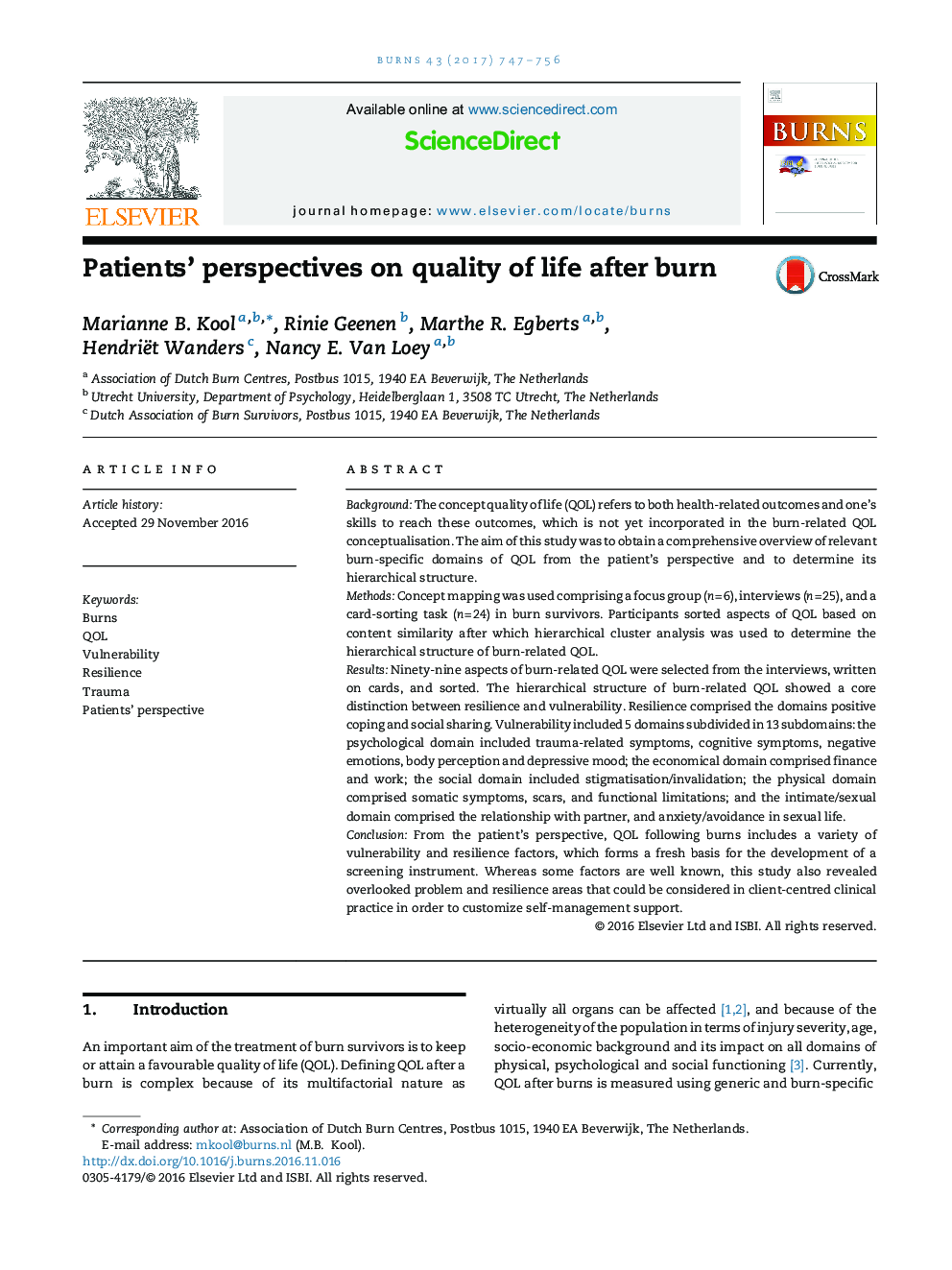| Article ID | Journal | Published Year | Pages | File Type |
|---|---|---|---|---|
| 5636020 | Burns | 2017 | 10 Pages |
â¢Burn-related quality of life (QOLRQOL) includes skills to reach health outcomes.â¢Burn-related QOL following burns includes a variety of vulnerability and resilience factors.â¢Cognitive problems, fatigue and intimate/sexual anxiety are under-addressed topics.â¢Findings support the adjustment of existing burn-specific health assessment.â¢Outcomes of this study can be used to innovate clinical screening.
BackgroundThe concept quality of life (QOL) refers to both health-related outcomes and one's skills to reach these outcomes, which is not yet incorporated in the burn-related QOL conceptualisation. The aim of this study was to obtain a comprehensive overview of relevant burn-specific domains of QOL from the patient's perspective and to determine its hierarchical structure.MethodsConcept mapping was used comprising a focus group (n = 6), interviews (n = 25), and a card-sorting task (n = 24) in burn survivors. Participants sorted aspects of QOL based on content similarity after which hierarchical cluster analysis was used to determine the hierarchical structure of burn-related QOL.ResultsNinety-nine aspects of burn-related QOL were selected from the interviews, written on cards, and sorted. The hierarchical structure of burn-related QOL showed a core distinction between resilience and vulnerability. Resilience comprised the domains positive coping and social sharing. Vulnerability included 5 domains subdivided in 13 subdomains: the psychological domain included trauma-related symptoms, cognitive symptoms, negative emotions, body perception and depressive mood; the economical domain comprised finance and work; the social domain included stigmatisation/invalidation; the physical domain comprised somatic symptoms, scars, and functional limitations; and the intimate/sexual domain comprised the relationship with partner, and anxiety/avoidance in sexual life.ConclusionFrom the patient's perspective, QOL following burns includes a variety of vulnerability and resilience factors, which forms a fresh basis for the development of a screening instrument. Whereas some factors are well known, this study also revealed overlooked problem and resilience areas that could be considered in client-centred clinical practice in order to customize self-management support.
